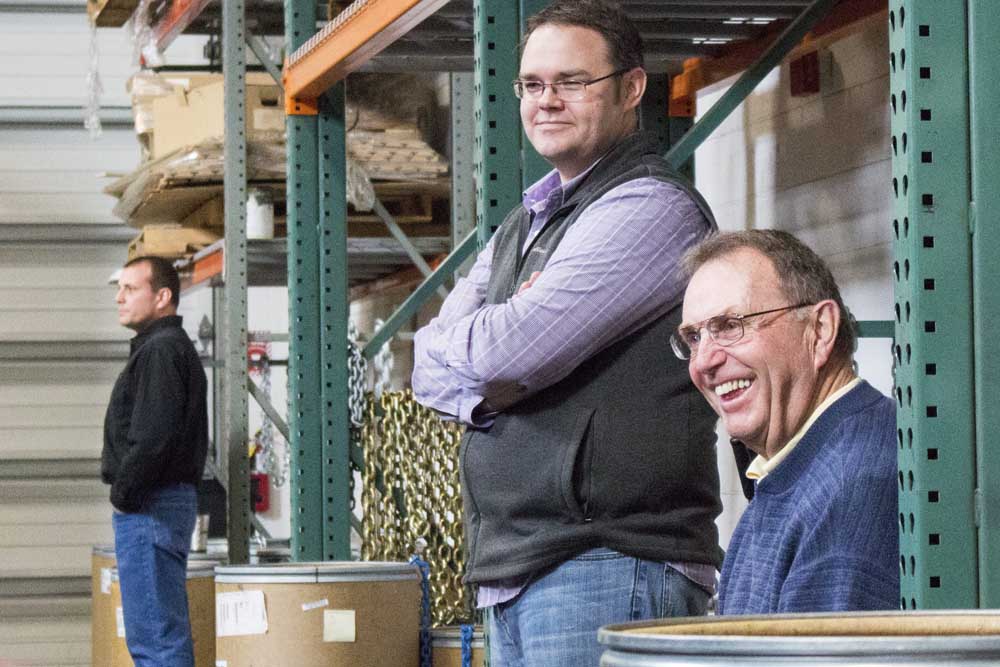Social service specialist goes above and beyond to protect children
Published 4:00 pm Monday, November 21, 2011
Pictures of the children Erik Tannler has worked with at Clatsop County’s Department of Human Services (DHS) office plaster one wall of his riverview cubicle. Each child looks happy, with some standing next to their reunited family members.
Trending
Despite the children’s past home-life problems, that’s the way Tannler wants to remember them – inevitably, after plenty of hardship – content.
Tannler, a social service specialist for DHS, has worked with dozens of children – or “kiddos,” as he calls them – during his seven-year career. At a job where little of the feedback is positive, where much of the perception of the work is rooted in the negative, being named Oregon’s top child welfare worker comes as a surreal shock.
“I’d still like to know who this guy is” who’s receiving the award, Tannler said chuckling. After all, he feels uncomfortable with the recognition.
Trending
But at a morning reception today at the county’s DHS office, Tannler received the state’s top award for work in child protective services, the Tom Moan Memorial Award for Excellence in Child Welfare, named after a long-serving DHS caseworker and administrator who died of cancer in 1985. Since 1986, the award has gone to the state’s top child welfare caseworker, as voted on by DHS administrators.
The award marked the first time in the award’s 25-year history that it went to a child welfare specialist in Clatsop County.
Tannler edged out 30 other finalists from around the state to receive the acknowledgement, awarded to a caseworker who’s gone above and beyond to provide services. Because of it, Tannler has been tapped to attend the National Conference of the Child Welfare League in Washington, D.C., in February.
The work, frustrating at times, isn’t for everyone, Tannler said. He was drawn to the work out of a desire to assist struggling children and their families.
“You get the call of wanting to … make the world better and lift your neighbors up and make the community great and whole,” Tannler said. “So I decided I wanted to be a school teacher when I was a little kid, went to school for that and decided teaching was not my route. But I wanted to work with children and show them a path and get them in the right direction so they can be positive citizens to their world.”
He specializes in finding a permanent home for children, whose parents often struggle with issues of substance abuse or mental illness. Though sometimes a child ends up being removed from a household and placed in foster care, or adopted outright, Tannler’s main goal is to reunite families.
One memorable kid, who Tannler calls Kyle S., moved through the system because of chronic neglect from his mom.
Knowing the mother couldn’t care for him, Tannler worked to reunite Kyle S. with his biological father. But there were concerns that the father couldn’t provide the proper level of support.
Illiterate and living with roommates in Coos Bay, the father wasn’t viewed as an optimal option, Tannler said. Tannler thought it could work out.
Once a week, Tannler took the nearly 12-hour round trip to Coos Bay with Kyle S. to visit the father. Over several weeks, the two reconnected.
“People kind of have this white-picket-fence mentality,” Tannler said. “But sometimes it can’t be completely perfect.”
Now, Tannler said, the kid is doing great. The father, he’s heard, has learned to read.
Despite Tannler’s service award, there are concerns that Clatsop County’s DHS office, and offices statewide, may be stretched too thin.
In the last four years, the local office has seen its caseloads jump from about five to 10 adoption cases to about 25 per year, according to Kim Meye, the office’s social service specialist supervisor. That’s a result in higher unemployment rates and substance abuse problems, she said.
In addition to the increased workload, that specter of budget cuts looms heavily over the local office, Meye said.
Though the office hasn’t faced layoffs, the feeling is that if the state’s budget cycle continues downward, it will become increasingly more difficult to protect positions.
“We’ve already seen cuts in services to clients,” Meye said. “Hopefully, those don’t continue.”
In recent years, the Oregon Legislature has approached the state’s self-sufficiency programs with a seesaw approach to funding. Oregon’s Temporary Assistance to Needy Families – encompassing such programs as the Oregon Trail Card – received cuts or reductions to a number of its services in the mid 2000s, before they were partially or fully reinstated in the state’s 2011-2013 biennium.
Other services received funding cuts of nearly 50 percent, however. Oregon’s JOBS program, intended to bolster job-related skills among the unemployed, saw its budget cut from $115 million to $60 million during the last budget cycle.
Tannler has been able to work through the resource squeeze by being a “great caseworker who has a lot of community connections,” Meye said.
The cuts have made the work more difficult, said Tannler, adding that he nonetheless tries to stay optimistic about helping and reuniting severed family ties.
“We’ve seen a lot of changes to self sufficiency programs, and those directly affect our families. With all the cuts, our ability to find services, and assist parents in paying for services, is becoming so limited,” Tannler said. “In the good old days, we could wrap our arms around them and give them all the support they needed. But today, our arms have gotten lots and lots smaller.”
But when he gets down, or he takes a call where a family member chews him out for taking away their child from a neglectful situation, Tannler can always look out the window at the river, or glance over at his cubicle wall, and take a deep breath.









